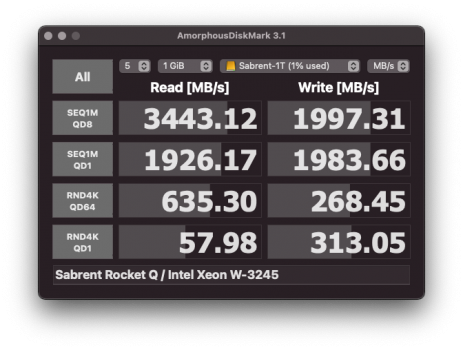Hey all!
Ive been reading through all of the related storage threads but I’m struggling to determine what the best SSD drive + PCI adapter card combo to get. I would love to get some recommendations from anyone that has researched or purchased this sort of setup.
My setup is a 12-core 2019 Mac Pro(7,1) with a 2TB built-in SSD, and a Pegasus J2i cage with two 8 TB spinning disks for backup purposes. I want to add another internal SSD to hold all of my family photos/videos that are pushing 3TB. A 4TB drive should give me enough headroom for a couple years until prices drop some more.
I don’t want to go over 4TB for cost reasons, and I think I’d prefer a single drive and adapter card for simplicity’s sake. I’m tempted by a NVMe solution, but am not sure if the extra cost is truly worth it.
Anyway, any thoughts or recommendations would be appreciated!
Ive been reading through all of the related storage threads but I’m struggling to determine what the best SSD drive + PCI adapter card combo to get. I would love to get some recommendations from anyone that has researched or purchased this sort of setup.
My setup is a 12-core 2019 Mac Pro(7,1) with a 2TB built-in SSD, and a Pegasus J2i cage with two 8 TB spinning disks for backup purposes. I want to add another internal SSD to hold all of my family photos/videos that are pushing 3TB. A 4TB drive should give me enough headroom for a couple years until prices drop some more.
I don’t want to go over 4TB for cost reasons, and I think I’d prefer a single drive and adapter card for simplicity’s sake. I’m tempted by a NVMe solution, but am not sure if the extra cost is truly worth it.
Anyway, any thoughts or recommendations would be appreciated!



